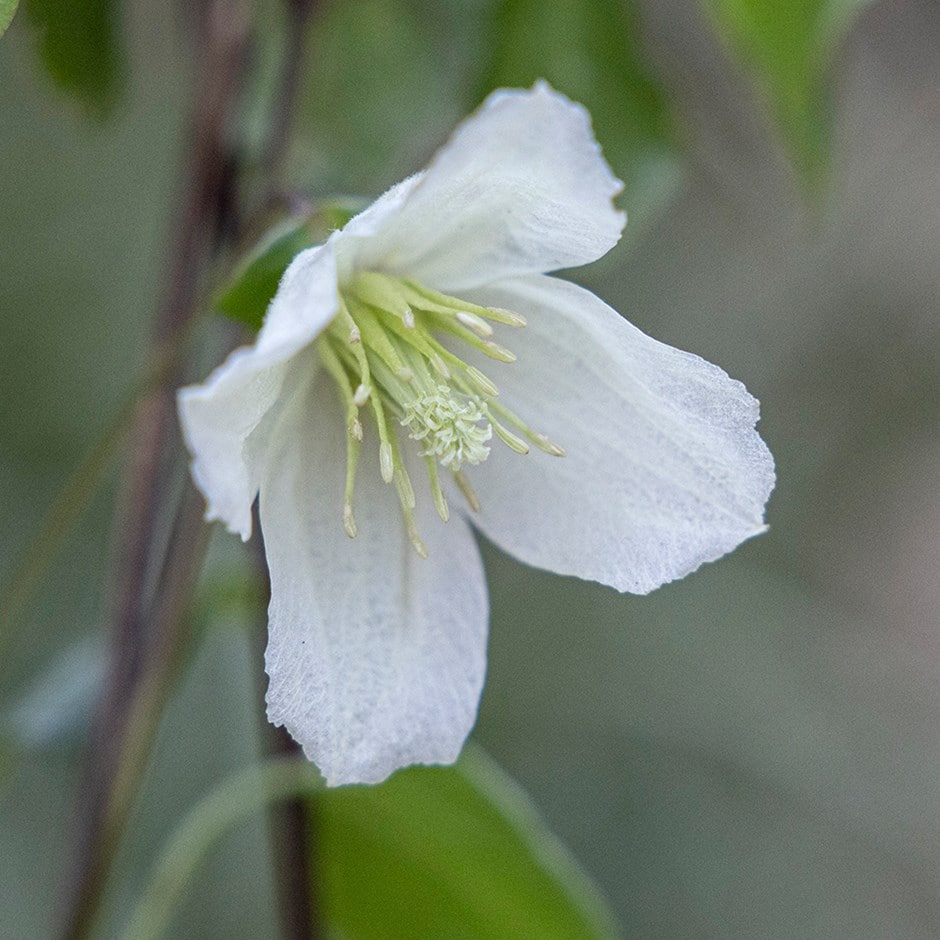
This charming evergreen climber is ideal for training around a doorway in a sunny, south or west facing, sheltered location, where the delicately scented blooms can be appreciated. Also suitable for growing in a container.
Looking at its best in autumn, winter and spring, ‘Jingle Bells’ can have a natural dormant period in summer where the leaves sometimes go brown.
How to care for Clematis cirrhosa Jingle Bells:
To avoid dry conditions, and to ensure good soil contact around the rootball, we advise planting climbers at least 30cm (12in), and preferably 45-60cm (18-24in) away from the base of a wall or fence. An even larger distance should be maintained when planting climbers beside an existing tree or shrub.
No routine pruning is necessary. If the spread of the plant needs to be restricted prune immediately after flowering, cutting back overlong shoots to healthy buds.
Apply a slow-release balanced fertiliser and a mulch of well-rotted garden compost around the base of the plant in early spring.
Flowering period:
- Jan
- Feb
- Mar
- Apr
- May
- Jun
- Jul
- Aug
- Sep
- Oct
- Nov
- Dec
Eventual height:
Eventual spread:
Position:
Full sun / light shade
Rate of growth:
Average
Soil:
Moderately fertile, moist, well-drained soil
Hardiness:
Borderline hardy (will need protection in winter in colder areas)
-
Humans: Skin irritant; Pets: Harmful if eaten
Product options


(shipped within 2-3 working days)

Delivery options (pick your preferred option at checkout)

This charming evergreen climber is ideal for training around a doorway in a sunny, south or west facing, sheltered location, where the delicately scented blooms can be appreciated. Also suitable for growing in a container.
Looking at its best in autumn, winter and spring, ‘Jingle Bells’ can have a natural dormant period in summer where the leaves sometimes go brown.
How to care for Clematis cirrhosa Jingle Bells:
To avoid dry conditions, and to ensure good soil contact around the rootball, we advise planting climbers at least 30cm (12in), and preferably 45-60cm (18-24in) away from the base of a wall or fence. An even larger distance should be maintained when planting climbers beside an existing tree or shrub.
No routine pruning is necessary. If the spread of the plant needs to be restricted prune immediately after flowering, cutting back overlong shoots to healthy buds.
Apply a slow-release balanced fertiliser and a mulch of well-rotted garden compost around the base of the plant in early spring.
Flowering period:
- Jan
- Feb
- Mar
- Apr
- May
- Jun
- Jul
- Aug
- Sep
- Oct
- Nov
- Dec
Eventual height:
Eventual spread:
Position:
Full sun / light shade
Rate of growth:
Average
Soil:
Moderately fertile, moist, well-drained soil
Hardiness:
Borderline hardy (will need protection in winter in colder areas)
-
Humans: Skin irritant; Pets: Harmful if eaten
Product options


(shipped within 2-3 working days)

